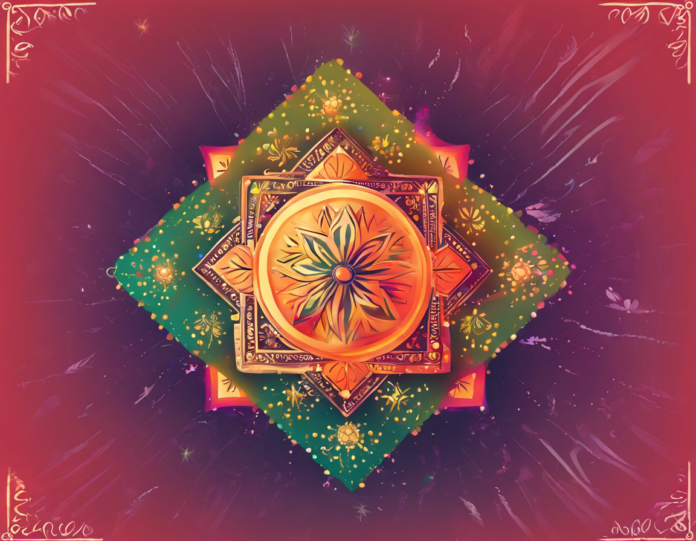Makar Sankranti, also known as Pongal, Lohri, Uttarayan, and Maghi, is a significant festival celebrated in various parts of India and Nepal. This festival marks the transition of the sun into the zodiac sign of Capricorn (Makar) and signifies the end of winter solstice and the beginning of longer days. It is a time of great joy, festivities, and rich cultural traditions.
History and Significance of Makar Sankranti:
Makar Sankranti holds immense cultural and religious significance in Hindu mythology. It is believed that on this auspicious day, the gods awaken from their deep slumber and bring an end to the inauspicious phase of ‘Dakshinayan.’ The festival also marks the beginning of the auspicious period known as ‘Uttarayan,’ during which all good deeds are encouraged.
Regional Celebrations and Traditions:
Makar Sankranti is celebrated with various regional customs and traditions across India. In the northern states of India, particularly in Punjab, Haryana, and Uttar Pradesh, the festival is known as Lohri and is marked by lighting bonfires, singing and dancing around the fire, and feasting on traditional foods like popcorn and rewri.
In the western state of Gujarat, Makar Sankranti is celebrated as Uttarayan, synonymous with kite flying. The sky is dotted with colorful kites of all shapes and sizes, creating a vibrant and festive atmosphere. People indulge in friendly kite-flying competitions, accompanied by traditional Gujarati delicacies like undhiyu and jalebi.
In southern India, the festival is called Pongal and is celebrated with great fervor in Tamil Nadu. The highlight of Pongal celebrations is the preparation of a sweet rice dish of the same name, which is cooked in earthen pots and offered to the Sun God as a symbol of gratitude and abundance.
In Maharashtra, Makar Sankranti is synonymous with the exchange of tilgul (sesame seeds and jaggery) and saying “tilgul ghya, god god bola” (take this sweet and speak sweetly).
Rituals and Customs:
Makar Sankranti is a festival that is deeply rooted in traditions and customs. People wake up early in the morning, take a holy bath, and offer prayers to the Sun God. They then engage in charity, offering donations to the poor and needy. Flying kites, taking dips in sacred rivers, and exchanging sweets and gifts are common practices during this festival.
Delicious Makar Sankranti Specialties:
Makar Sankranti is incomplete without indulging in traditional festive delicacies. Some popular dishes prepared during this time include:
- Tilgul: A sweet made of sesame seeds and jaggery, symbolizing the sweetness and warmth of relationships.
- Pongal: A sweet rice dish cooked with jaggery, ghee, cashews, and raisins, symbolizing prosperity and abundance.
- Undhiyu: A mixed vegetable dish made with seasonal winter vegetables, lentils, and spices, popular in Gujarat.
- Bihu: Assam celebrates with various traditional sweets and dishes like pitha, larus, and laddus.
Eco-Friendly Celebrations:
In recent years, there has been a growing emphasis on celebrating Makar Sankranti in an eco-friendly manner. Many people opt for natural, organic colors for kite flying, avoid using plastic-based threads (manja) that harm birds, and prioritize the use of biodegradable materials for decorations and offerings.
Frequently Asked Questions (FAQs):
-
What is the significance of kite flying during Makar Sankranti?
Kite flying symbolizes reaching out to the gods, seeking blessings, and letting go of past grievances and sins. -
Why is sesame and jaggery considered auspicious during Makar Sankranti?
Sesame seeds and jaggery are believed to have warming properties that help the body fight the cold during winter and symbolize good health and prosperity. -
Can people of all religions celebrate Makar Sankranti?
Yes, Makar Sankranti is a cultural festival that transcends religious barriers and is celebrated by people of all faiths across India. -
Why is taking a holy dip in rivers considered auspicious on Makar Sankranti?
Taking a holy dip is believed to cleanse the body and soul of sins and purify oneself, inviting good luck and fortune for the coming year. -
How long does the Makar Sankranti festival last?
Makar Sankranti is typically a one-day festival, but in some regions, like Tamil Nadu, it is celebrated over multiple days as Pongal.
Makar Sankranti is a festival that brings people together, fosters unity and harmony, and celebrates the bounty of nature. It is a time to reflect on the changing seasons, express gratitude for the harvest, and usher in a period of positivity and prosperity. May this Makar Sankranti fill your life with joy, warmth, and abundant blessings!


